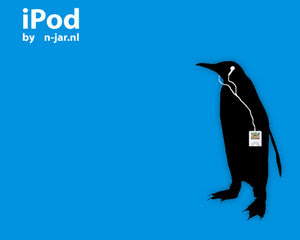
 A major update to the GNU Image Manipulation Program (GIMP), widely regarded as the leading free software raster image editing program, is scheduled for this month. The 2.6.5 release is expected to include a number of new features and enhancements to existing features.
A major update to the GNU Image Manipulation Program (GIMP), widely regarded as the leading free software raster image editing program, is scheduled for this month. The 2.6.5 release is expected to include a number of new features and enhancements to existing features.GIMP 2.6.5 is a bug-fix release in the stable GIMP 2.6 series. The NEWS file lists the changes in details. As usual, the source can be downloaded from ftp.gimp.org. Binary packages for the various supported platforms should become available soon; please check the Downloads section.
New tools
The first thing most users will notice about 2.4 is the addition of three new tools to the palette: the Align tool, the Foreground Extraction tool, and a new "Simple" Rectangle Selector. The Align tool lets you vertically and horizontally align image layers -- a task you had to perform manually before. You can align an image to any edge or the center, specify an offset in any direction, and adjust vertical and horizontal alignment separately.
The "Simple" Rectangle Selector marks a rectangular portion of the image, after which the boundaries of that rectangle can be moved and resized by hand without affecting the underlying image. It is a bit like having a "live mask," letting you work on portions of the image separately without re-selecting. Unlike the basic selection tools, selecting a portion of the image with this tool and adjusting that selection are difficult to mess up. I know it doesn't sound like a big deal, but for tasks like previewing and tweaking a crop this is a very nice enhancement.
The Foreground Extractor is quite a little marvel. With it you can pull any object out of a picture, regardless of the surroundings. It uses the Simple Interactive Object Extraction (SIOX) algorithm, originally developed for use in the E-Chalk distance-learning tool. First, you simply draw a loose outline around the object you wish to extract. Then, you scribble over "representative" portions of the foreground object and voilà -- the algorithm magically finds the edges of your object.
You can read more about this feature (including a nice tutorial) at SIOX.org. Creating tabloid-worthy phony images just got a whole lot easier.
In addition to these new tools, several existing tools are significantly enhanced. The airbrush tool now responds to pressure (on a pressure-sensitive tablet) like a real airbrush. The clone tool can rubber-stamp from all visible layers instead of just the active layer. And you can now load and use native Photoshop brushes with the paint tools.
GIMP 2.4 has new actions in the menus as well. "Snap to Canvas Edge" and "Snap to Active Path" are now options under View. "Remove Alpha Channel" is new under the Transparency menu, and a "Recompose" option has been added to the Mode menu. "Desaturate" can now use any of three different methods to remove color. Under the hood, a new interpolation method called Lanczos has been added for all scaling operations. It outperforms the old champ, cubic interpolation. Scalable Vector Graphics (SVG) cut-and-paste now works between GIMP and other applications. The GIMP 2.4 also has full drag-and-drop capability for image data, layers, and channels. For example, if you want to make a new image out of the blue channel only, just drag it from the Channels list to the toolbox.
Under the hood, a new interpolation method called Lanczos has been added for all scaling operations. It outperforms the old champ, cubic interpolation. Scalable Vector Graphics (SVG) cut-and-paste now works between GIMP and other applications. The GIMP 2.4 also has full drag-and-drop capability for image data, layers, and channels. For example, if you want to make a new image out of the blue channel only, just drag it from the Channels list to the toolbox.
Reorganization
Its developers made other changes for 2.4 to meet GNOME Human Interface Guidelines (HIG) and Freedesktop.org standards, and in response to user requests.
In the first category are the usual gang of capitalization, internationalization, and user interface (UI) element fixes. The Delete key now deletes/erases the current selection -- a feature prevented by a GTK bug in the past. Button order for dialog windows and pop-ups is now read from the user's system preferences, adhering to either the GNOME or KDE standard, depending on which environment is running. And the default measurement units are now determined by the user's locale setting, which should postpone the metric/imperial armageddon for at least a few tense months.
A lot of work has gone into cleaning up the menu structure in 2.4. Color operations -- previously relegated to a sub-menu under Layer -- have been granted a top-level menu of their own. This is a long overdue change, since these are among the most-accessed features of the application.
Plugins and filters have undergone a polish as well. All plugins and filters now support a live "preview" box. Several have been renamed for clarity's sake. The menus for plugins and filters have been cleaned up as well. While 2.2 had separate top-level menus for the Scheme scripting engine Script-Fu, the Python scripting engine Python-Fu, and an assortment of video-related filters and actions titled Video, 2.4 places both scripting plugins under the extensions menu Xtns, and merges the video effects in with the other filters.
Color management
2.4 is the first GIMP release to support color management, a feature dearly missed by photographers and designers up until now. In the preferences dialog you will find a new Color Management control panel where you can set rendering intent and specify your working colorspace and device profiles.
GIMP is also one of the first applications to support the new ICC Profiles in X specification, which associates ICC color profiles with X displays at the X server (rather than the application) level, although for the time being it doesn't offer any advantage over picking your display profile manually.
Color management at this time is still a work-in-progress. For example, you cannot transform an image from one colorspace to another within the program. But it is great to see color management finally make an appearance in the GIMP. For more information about color management and its usefulness, read this introductory article I wrote in March.
Room for improvement
As always in software, there are areas for improvement. The most fundamental shortcoming of the GIMP, according to graphics professionals, remains its limitation to grayscale and RGB image modes; press-ready images need CMYK and many designers make heavy use of Lab color and duotone (tinted) modes. Second is its limitation to 8-bit color -- as high-end scanner and digital camera prices drop, more and more people need to work with 16-bit-per-channel data. Fixing either these issues will require rewriting a significant portion of the program's core.
The GIMP developers know this, and the long-promised port of GIMP internals to the new Generic Graphical Library (GEGL) is their solution, but it has been pushed back to a future release. As GEGL was first proposed five years ago, some -- understandably -- wonder whether it will ever see the light of day.
Apart from massively reworking the core, however, there are a few bits and pieces to which I would like to see improvement in the short term. Better support for image metadata and additional digital camera RAW filetypes would help professional users, for instance. And many Photoshop users want to see additional tools like a "history" brush or a polygon tool. The addition of surface textures and "natural media" effects, while not critical, would certainly be fun to see.
Customizable Interface
Each task requires a different environment and GIMP allows you to customize the view and behavior the way you like it. Starting from the widget theme, allowing you to change colors, widget spacings and icon sizes to custom tool sets in the toolbox. The interface is modulized into so called docks, allowing you to stack them into tabs or keep them open in their own window. Pressing the tab key will toggle them hidden.
GIMP features a great fullscreen mode allowing you to not only preview your artwork but also do editing work while using the most of your screen estate.
Photo Enhancement
Numerous digital photo imperfections can be easily compensated for using GIMP. Fix perspective distortion caused by lens tilt simply choosing the corrective mode in the transform tools. Eliminate lens' barrel distortion and vignetting with a powerful filter but a simple interface.
The included channel mixer gives you the flexibility and power to get your B/W photography stand out the way you need.
Digital Retouching
Hardware Support
GIMP includes a very unique support for various input devices out of the box. Pressure and tilt sensitive tablets, but also a wide range of USB or MIDI controllers. You can bind often-used actions to device events such as rotating a USB wheel or moving a MIDI controller's slider. Change the size, angle or opacity of a brush while you paint, bind your favorite scripts to buttons. Speed up your workflow!
File Formats
The file format support ranges from the common likes of JPEG (JFIF), GIF, PNG, TIFF to special use formats such as the multi-resolution and multi-color-depth Windows icon files. The architecture allows to extend GIMP's format capabilities with a plug-in. You can find some rare format support in the GIMP plugin registry.
Thanks to the transparent virtual file system, it is possible to load and save files to from remote locations using protocols such as FTP, HTTP or even SMB (MS Windows shares) and SFTP/SSH.
To save disk space, any format can be saved with an archive extension such as ZIP, GZ or BZ2 and GIMP will transparently compress the file without you needing to do any extra steps.
Supported Platforms
- GNU/Linux (i386, PPC)
- Microsoft Windows (XP, Vista)
- Mac OS X
- Sun OpenSolaris
- FreeBSD











0 comments:
Post a Comment